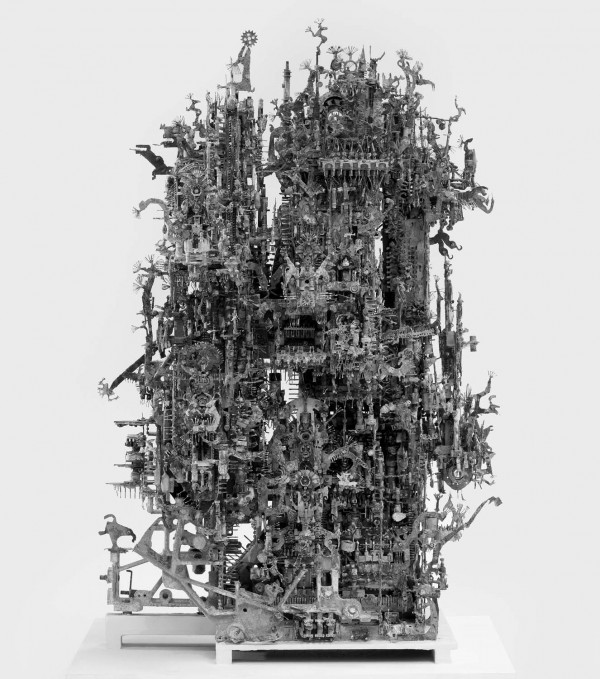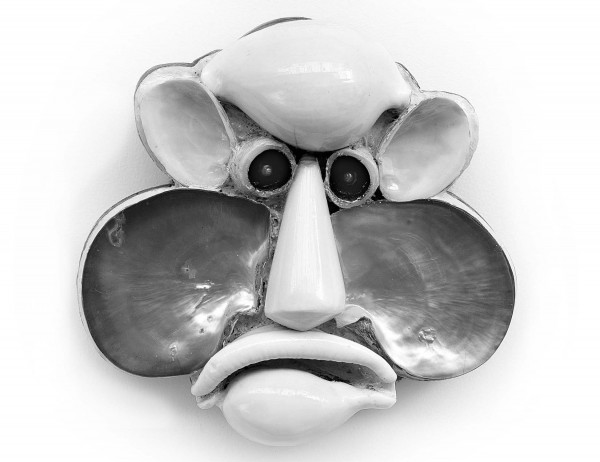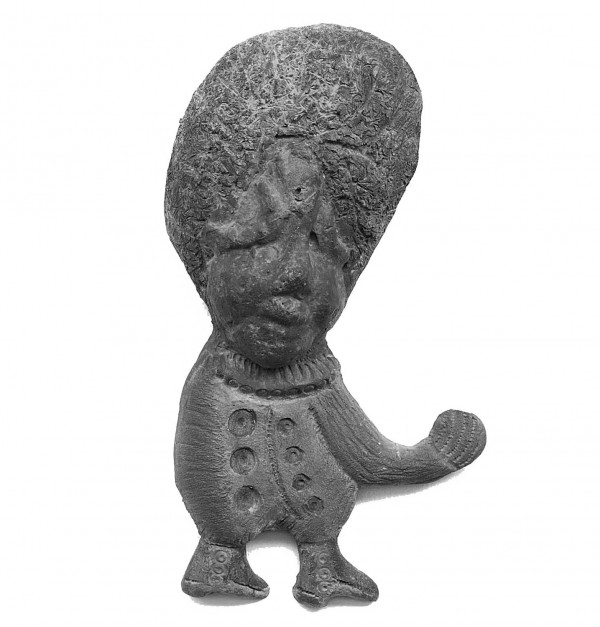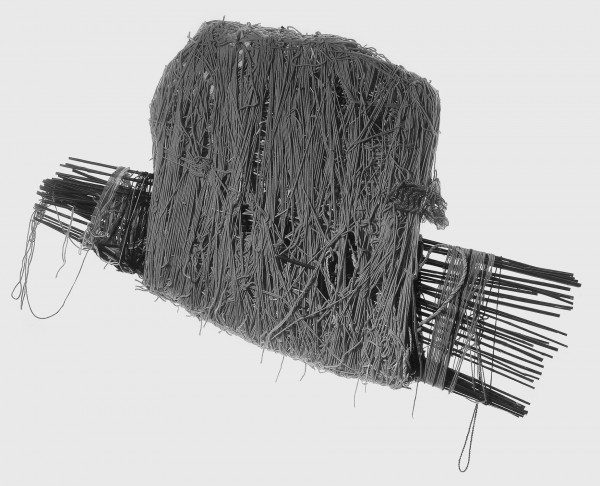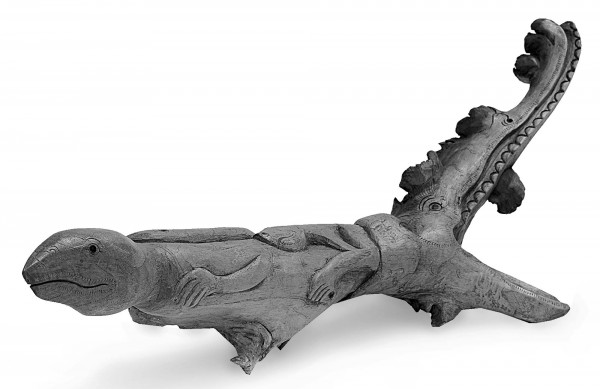When I get lost in the woolen chrysalides by Judith Scott, in the ghostly steel cities by A.C.M., in the bowels of the pipes and tires by Franco Bellucci or in the assemblies of the Healing Machine by Emery Blagdon, it is hard not to think of certain objects of worship, the so-called magical objects or fetishes. Yes, it is true that establishing a link between the works labeled “art brut” and the so-called magic objects from the African continent, means engaging oneself on a ground whose outcome is uncertain, stuck in the middle of a battle of different schools. For, beyond the distinction proposed by Jean Dubuffet, art brut springs – according to most of its specialists – from a spontaneous, individual, even asocial practice, while the so-called magical objects would be subject to strict rules of a collective order, made in a ritual context and therefore binding. As to anthropologists, they clearly differentiate between these two categories because such approximation would fall under primitivism as it ignores not only the fundamental difference between a creator of art brut and a seer-priest but also the ritual context.
Yet when I look at some art brut sculptures-assemblages, I cannot help but to recognize similarities. Is it a formal resemblance, accidental and fortuitous? Charged objects, inhabited, animated things, they give off unspeakable strength and their materiality has irresistibly the same effect on me. These arrangements from often heterogeneous materials are experienced as enigmatic as they refer ultimately to themselves. Could it be this effect of auto-reference that prevents us from seizing the entire object that touches us? Could it be that this inaccessibility gives them more power?
Enigmatic works such as those of Judith Scott or A.C.M. or a voodoo altar from Togo or Congo nkisi magic sculpture resist our conceptual models as much as our lexical limits. For how to describe these things? Thus generally, and in order to approach them, a tiny part of their secret is revealed by offering detailed biographies for art brut artists while the magic objects are accompanied by lengthy scholarly notes on the ritual and the community to which they are related.
But what do we truly see? The majority of art brut sculptures and sculptures-altars from Africa fall under the non-hierarchical and bring together disparate materials: rope, iron threads, rags, electric cables, pipes, or encrypted magical signs, human fragments (dismembered art brut dolls, magical objects from bones), pieces of floating or used wood, other accumulations of waste, stuffings from fragile and passed down materials. Sometimes they even seem left to run their natural course, to their own performance, in some way.
These fragments of discarded materials, these organic forms or the labyrinthine accumulations all partake in a secret and intimate writing. These objects-poems which are art brut sculptures result from a history in which each added element evokes a gesture, a statement, a historical fact, a memory. This is also the case of compositions produced as part of a voodoo ritual: although their “recipes” consist of some basic elements prescribed by the ritual, they are also made up – contrary to what we tend to think – from a multitude of complex elements, chosen by the priest-soothsayer, testifying not only to extreme plasticity / malleability of these ritual productions, but also to the fact that a voodoo altar is perhaps first a personal work before being collective.
If the concept of imaginary / magical writing is essential in many graphic works of creators of art brut, it is also present in the sculptures by A.C.M., who detaches / dissociates elements from old typewriters, alarm clocks, transistors or electronic parts, then numbers them to categorize them before he sands them and bathes them in acid, to transform them into labyrinthine constructions. This process does not seem far from certain creations of altars dedicated to voodoo powers in which each component (herbs, shells, bones, stones, but also horsehair radio antennas, padlocks, whistles…) is carefully chosen to symbolize a rebus. The materials are ordered in a certain way to make sense: each element thus receives a specific meaning depending on the element that precedes it and the one that follows. Only the priest-soothsayer knows the entire message.
A systematic repetitive gesture is inseparable from the making and the activation of a magical object. To channel the forces, attract them, redirect them or deposit them by reducing them in a certain way to silence, one twists and knots, fills and envelopes, coats and pierces. This characteristic gesture is also the artistic expression of conjuration. The recurring presence of ligated rope or strips of cloth knotted in magical objects – itself an expression of the attempt to control – is found in the work of Judith Scott, who, without the esoteric knowledge of a priest-soothsayer spontaneously began to tie together and envelope objects. So can we thus link between the creative processes in art brut and that of a magic object? Does Bellucci, when he imprisons the members of a plastic doll in a labyrinthine tangle of pipes, twisted tires and electricity wires, makes the same thing as a priest-soothsayer who ties, twists and pierces a voodoo object? While piercing the voodoo figurines with blades or driving piles into the ground are indeed gestures employed both to symbolize aggression in its violence and accompany the words pronounced by the soothsayer-priest so that they materialize, the two authors, the creator of art brut on one side and the soothsayer-priest on the other, are nevertheless fundamentally different. But what their creations share is this incredible ability to affect us, move us, perhaps, who knows, by magic … That is the power of strange things …
